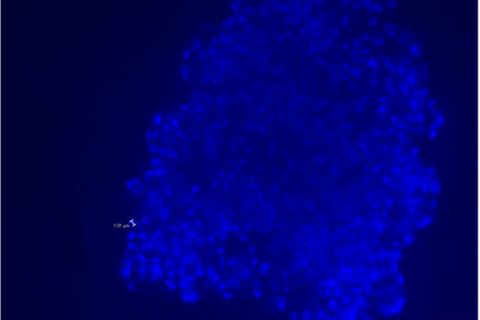A comparison of the genomes of methane-producing microorganisms reveals that temperature adaptation might not be genomically encoded, but rather enforced through protein regulation and finer scale adaptations in amino acids.

A research team, led by Paula Prondzinsky and Shawn Erin McGlynn of the Earth-Life Science Institute (ELSI) at Tokyo Institute of Technology, recently investigated a group of organisms called methanogens, methane-producing, single-celled microorganisms that belong to a larger domain of “Archaea”. As a single physiological group, methanogens can thrive across a range of temperature extremes, from -2.5 oC to 122 oC, making them ideal candidates to study temperature adaptation.
In this work, the researchers analysed and compared the genomes of different species of methanogens. They divided the methanogens into three groups based on the temperatures they thrived in—thermotolerant (high temperatures), psychrotolerant (low temperatures), and mesophilic (ambient temperatures).
They then constructed a database of 255 genomes and protein sequences from a resource called the Genome Taxonomy Database. Next they obtained temperature data for 86 methanogens which are in laboratory collections from the Database of Growth TEMPeratures of Usual and Rare Prokaryotes. The result was a database which linked genome content to growth temperature.
Pinpointing orthogroups
After that, the researchers used a software called OrthoFinder to establish different orthogroups—sets of genes descended from a single gene present in the last common ancestor of the species under consideration. They then segregated these orthogroups into i) core (present in over 95% of the species), ii) shared (present in at least two species but in less than 95% of the organisms), and iii) unique (present only in a single species). Their analyses revealed that about one third of the methaogenic genome is shared across all species. They also found that the amount of shared genes between species decreases with increasing evolutionary distance.
Interestingly, the researchers found that thermotolerant organisms had smaller genomes and a higher fraction of core genome. These small genomes were also found to be more evolutionarily “ancient” than the genomes of psychrotolerant organisms.
Since thermotolerant organisms were found in multiple groups, these findings indicate that the size of the genome is more reliant on temperature than on evolutionary history. They also suggest that as methanogen genomes evolved, they grew rather than shrank, which challenges the idea of “thermoreductive genome evolution,” i.e., that organisms remove genes from their genomes as they evolve into higher temperature locations.
Similar proteins
The researchers’ analyses also showed that methanogens grow across this wide range of temperatures without many special proteins. In fact, most of the proteins encoded by their genomes were similar. This led them to consider the possibility of cellular regulation or finer scale compositional adaptations as the root cause of temperature adaptation. To investigate this, they looked into the composition of amino acids - the building blocks of proteins - in the methanogens.
They found that specific amino acids were enriched in particular temperature groups. They also found compositional differences in the amino acids pertaining to their proteome charge, polarity, and unfolding entropy—all of which affect protein structure, and thereby its ability to function.
In general, they found that thermotolerant methanogens have more charged amino acids and functional genes for ion transport, which are not present in psychrotolerants. Whereas psychrotolerants organisms are enriched in uncharged amino acids and proteins related to cellular structure and motility. However, the researchers could not pinpoint specific functions shared by all members of a temperature group, suggesting that temperature adaptation is a gradual process which occurs in fine steps rather than requiring large scale changes.
Altogether, “This indicates that the very first methanogens, which evolved at a time when the conditions on the Earth were hostile to life, may have been similar to the organisms we find on present day Earth,” explains Paula Prondzinsky. “Our findings could point toward traits and functions present in the earliest microbes, and even hold clues as to whether microbial life originated in hot or cold environments. We could extend this knowledge to understand how life could adapt to other kinds of extreme conditions, not just temperature, and even unravel how life on other planets could evolve.”







No comments yet